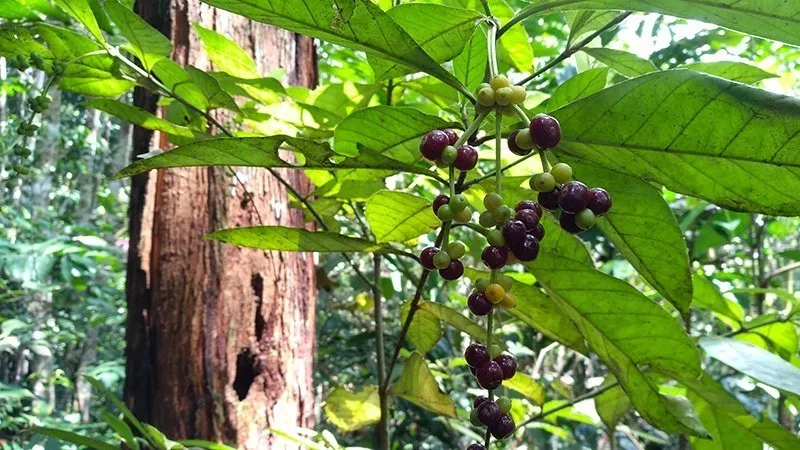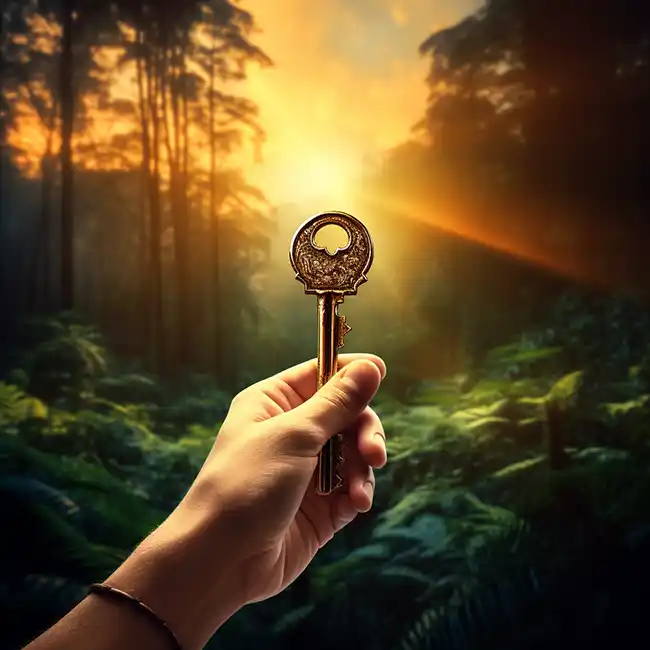Chacruna and Ayahuasca: a symphony of nature
Chacruna (Latin: Psychotria viridis) is a shrub native to the Amazon rainforest, often used in traditional practices of Peru as one of the components of the ayahuasca drink. The drink is based on a powerful combination of two key ingredients: the Banisteriopsis caapi vine, which is the “teacher plant”, and chacruna. The synergy of these botanical elements opens the doors of perception and takes people on a transformative journey. The role of Chacruna in this mystical mixture is to shift the “assemblage point” and increase the speed of human perception. It serves as the key that opens the door to a world of deeper awareness, allowing one to comprehend the deep work of Ayahuasca.
Chacruna and the DMT Mystery
Although many plants have psychoactive properties, Chacruna’s distinctive feature is its rich content of the substance DMT (dimethyltryptamine). DMT is a naturally occurring psychoactive compound found not only in chacruna leaves, but also in many other plants, as well as in the brains of animals and humans. In the human body, the pineal gland, often called the “third eye,” produces DMT with increased activity during REM sleep. DMT is also active in the neocortex and hippocampus, areas of the brain vital for advanced cognitive functions such as learning and memory. This unique compound is believed to be associated with spiritual and mystical experiences, vivid dreams and near-death experiences. The deep-rooted connection between DMT and the human psyche has intrigued researchers for years.
What the Science Says About Chacruna and DMT
Classic ayahuasca, consisting of the Banisteriopsis caapi vine and chacruna, has been the focus of many studies. We have a whole section on our blog where we lay out the results of these studies in simple terms.
As for DMT extracted from chacruna, the following properties have been discovered:
1. Improves Brain Plasticity: DMT shows potential for increasing brain plasticity, the brain’s ability to adapt and rewire itself.
2. Neurogenesis: Activates the formation of new neurons in the hippocampus, improving memory and learning ability. [1]
3. Reduce Anxiety: DMT has demonstrated the ability to reduce anxiety.
4. Antidepressant effect: A decrease in depressive symptoms has been correlated with mystical, transcendental experiences. The ability of DMT to activate the development of dendrites in nerve cells – special processes that connect them to each other – also plays a significant role in getting rid of depression. [2] [3]
Science shows: The effectiveness of Ayahuasca is comparable to several years of meditation.
Ayahuasca Enhances Long-Term Logical Thinking Abilities and Attention through “Ego Dissolution”
Ayahuasca and the “Bad Trip”: The Role of Complex Experiences in the Ayahuasca Experience
References:
1. ‘Mystical’ psychedelic compound found in normal brains. (2019, June 27). https://www.michiganmedicine.org/health-lab/mystical-psychedelic-compound-found-normal-brains
2. Morales-García, J. A., Calleja‐Conde, J., López-Moreno, J. A., Alonso‐Gil, S., Sanz-SanCristóbal, M., Riba, J., & Pérez-Castillo, A. (2020). N,N-dimethyltryptamine compound found in the hallucinogenic tea ayahuasca, regulates adult neurogenesis in vitro and in vivo. Translational Psychiatry, 10(1). https://doi.org/10.1038/s41398-020-01011-0
3. Cameron, L. P., Benson, C. J., Dunlap, L. E., & Olson, D. E. (2018). Effects of N,N-Dimethyltryptamine on Rat Behaviors Relevant to Anxiety and Depression. ACS Chemical Neuroscience, 9(7), 1582–1590. https://doi.org/10.1021/acschemneuro.8b00134
4. Soares, D. B. S., Duarte, L. P., Cavalcanti, A. D., Silva, F. C., Braga, A. D., Lopes, M. T. P., Takahashi, J. A., & Filho, S. a. V. (2017). Psychotria viridis: Chemical constituents from leaves and biological properties. Anais Da Academia Brasileira De Ciencias, 89(2), 927–938. https://doi.org/10.1590/0001-3765201720160411



